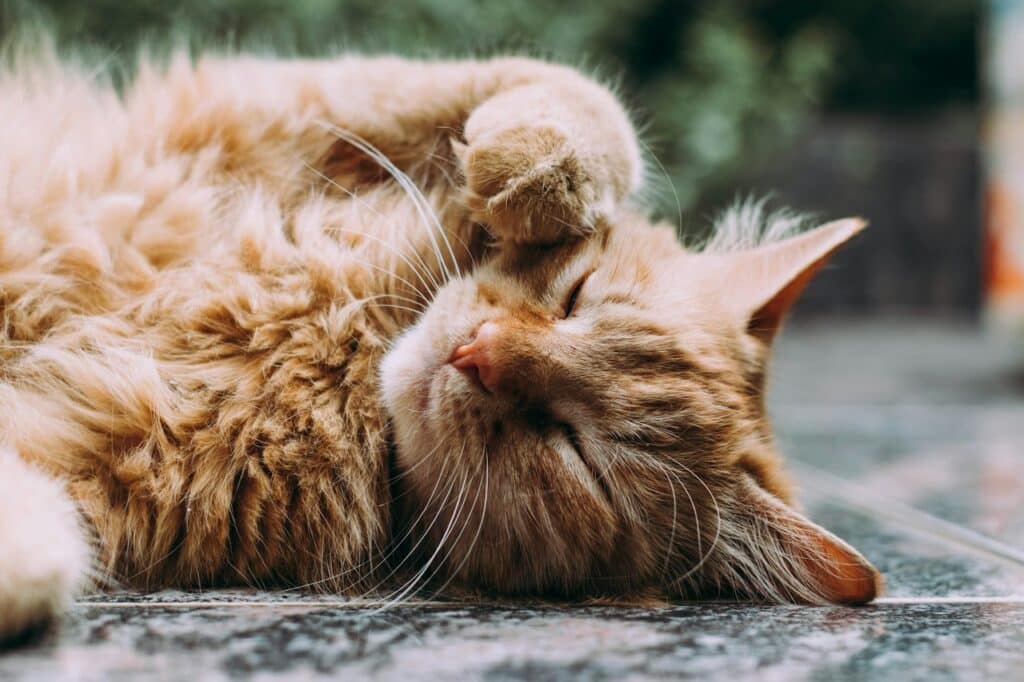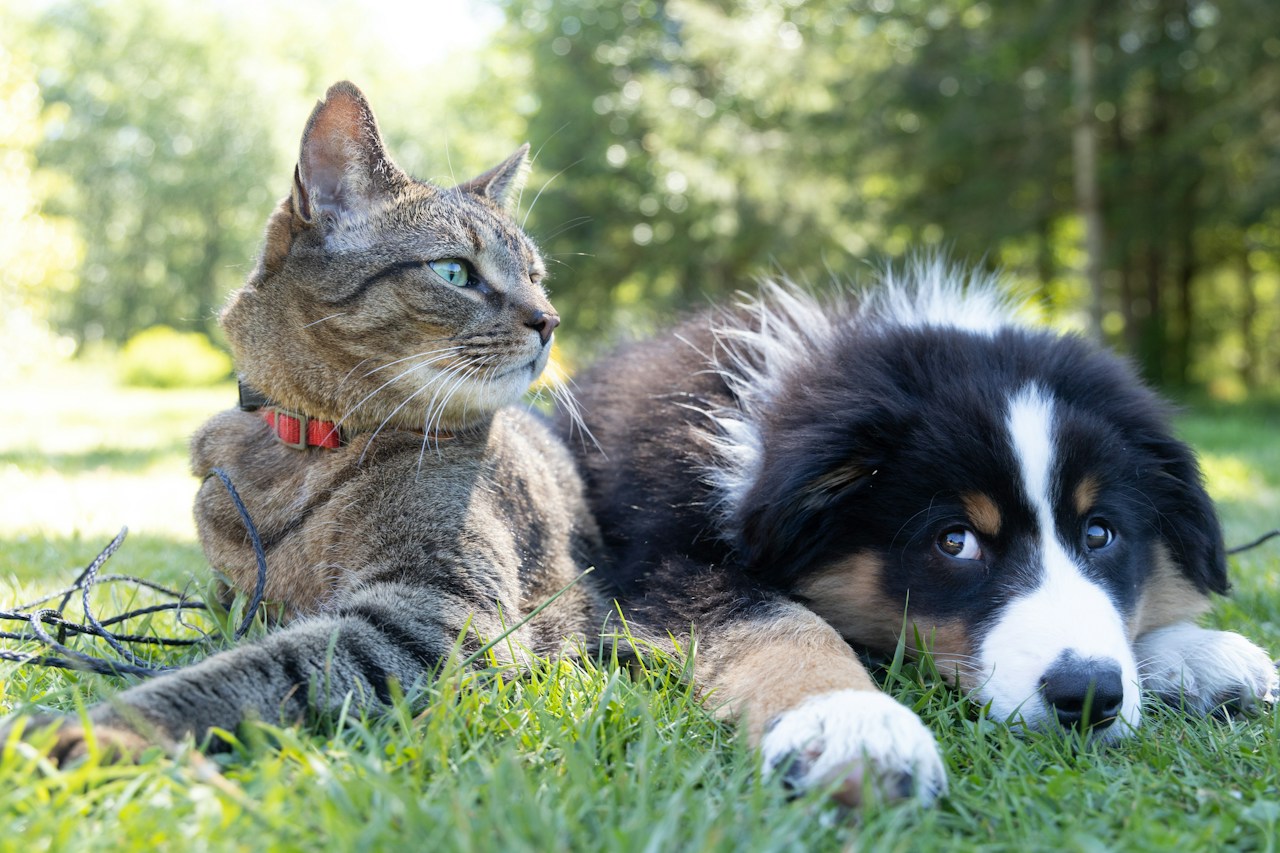Hair loss in cats? why? If the coat stays thick, there’s nothing to worry about! However, if you lose it in patches, you have to recognize the problem to be able to solve it!
Table of Contents

Is it normal for hair loss in cats?
If you have a cat, and even more so if it is long-haired like the majestic Maine Coons or the Norwegian forest cats, you know it perfectly: every cat goes through periods of shedding every year! On these occasions, the hair loss in cats can be abundant: it seems that the hairs are everywhere and the clothes left carelessly out of the closet mysteriously become fur.
Of course, however, this is completely normal: every cat changes its hair in autumn and spring, and, especially in the second case, this phenomenon is very conspicuous. The cat’s mount allows him to adapt to the current season, a bit like changing the wardrobe for us, and everything we can do to help him swallow less hair when he licks (as well as to save furniture and clothes from the invasion of hair) is to brush it frequently.
However, if your cat loses its hair in periods other than those of the molt and perhaps loses it in patches, in specific areas of the body that come to be completely hairless, there is a problem that should not be overlooked!
There are some red flags to watch out for: is the fur dull and sticking to your fingers when you stroke it?
The cat does tend to lick itself more in certain areas or does it scratch with insistence, creating areas where the hair is more thinned out? In these cases, something is wrong: we are talking about feline alopecia. There are many causes and it is best to call your vet. What is certain, however, is hair loss in cats is nothing more than a symptom: so let’s try to list its possible origins, so we can solve the problem!
Cause of hair loss in cats
Is your cat shedding patchy fur? This is the typical symptom of feline alopecia and the causes can be many: both superficial (that is, directly attributable to the skin and integumentary system), and secondary, that is, a consequence of other internal diseases.
L ‘ alopecia does not necessarily imply that the cat will lick: the hair may also be lost in patches without the cat monster’s particular attitudes in this regard and is the typical phenomenon of metabolic diseases. In these cases, there is also another frequent symptom of alopecia, which is itching. If we are talking about symptoms, however, it is clear that to find a cure we must identify the cause of hair loss.
Here are the main causes of alopecia in cats :
- Primary follicular disease: alopecia caused by problems with the hair follicle, caused by infectious agents that have entered it, damaging the hair and causing it to fall out. Cat ringworm falls into this group because the fungus damages the hair and causes it to fall out;
- Endocrine disease: it is caused by the internal organs. It has little to do with the hair but it causes metabolic imbalances that prevent the formation of new hair when the old ones fall out. This creates hairless patches, but the cat does not lick itself, it does not itch, and has no problem with being stroked in those areas;
- Autotrauma: This is when the infectious agent itself does not damage the hair. But causes an itch so intense that the cat compulsively licks itself, thus causing hair loss. Way, as well as the psychogenic alopecia of the cat: it is the cat that, by licking itself, causes the loss of hair.
Specific causes of hair loss in cats
We have seen the main causes of hair loss in cats, but unfortunately, recognizing the source of the problem is not that simple. The categories listed above are in turn divided into other specific situations. So let’s try to summarize them quickly, to identify and treat the reasons for cat alopecia :
- Bacteria: the bacteria that live on the skin have begun to reproduce in an uncontrolled way, spreading and also entering the hair follicles. It is treated with antibiotics;
- Fungi: This is mycosis and is caused by ringworm or other fungi that attach themselves to the cat’s skin. Very difficult to get rid of;
- Allergy: your cat’s hair loss could be due to an allergy to some food or external agents. By identifying the allergen and eliminating it, everything will return to normal;
- Mange: the itching caused by this disease causes the cat to scratch until it loses its hair. However, your vet will be able to advise you on the right drug to treat it quickly;
- Hyperthyroidism: This metabolic disease causes exaggerated hair growth, which leads the cat to compulsively lick itself to the point of causing alopecia. It is not to be underestimated and hair loss is just one of the minor symptoms of this disorder. Run to the vet now!
- Cushing’s Syndrome: If your cat acts as if he is stressed and nothing has happened to justify it, it could be this disorder. Again, go to the vet immediately.

My cat is healthy but he is losing hair
What to do if you have ruled out, with the help of a specialist? All of these possible causes and loss of hair in cats? It may sound strange, but the answer is: don’t worry, and pamper him! Cat hair loss can be caused even by simple periods of stress. In these cases, it is a transitory and not dangerous phenomenon: try to identify it, if possible. The cause of the cat’s nervousness to deal with it. If the origin remains incomprehensible, pamper him more than usual until he is calm again!
Home treatment for cat hair loss
It is impossible to prevent hair loss; however, you can control it through feeding and grooming. Brushing your cat’s fur will prevent matting and pilling; In addition, it will strengthen the bond that binds you to him. A change in diet can improve the condition of your cat’s fur and skin i will suggest 5 home treatments for hair loss in cats :
- Brush your cat regularly. To control hair loss, brush your hair for 5 to 10 minutes at least once a week. If your cat is long-haired or shedding a lot, you may need to do this every two or three days, or even more often.
- Help your cat get used to being brushed regularly.
- Bathe your cat
- Use hygiene products for cats. Visit a pet store and look for cleaning wipes and sprays for dry grooming your cat’s fur.
- Go to a professional hairdresser
How can I treat my cat’s hair loss? Cat hair loss treatment
Hair loss in cats can be treated with topical therapy, such as medicated shampoos or ointments, or with oral therapy.
Topical therapy: Topical therapy is applied directly to the cat’s skin to treat a condition such as alopecia areata.

Topical therapy is applied directly to the cat’s skin to treat a condition such as alopecia areata. Oral therapy: Oral therapy is the use of medications to treat hair loss.
Oral therapy is the use of medications to treat hair loss. Laser therapy: Laser therapy is a type of treatment that uses a beam of light to treat the affected area.
Laser therapy is a type of treatment that uses a beam of light to treat the affected area.

